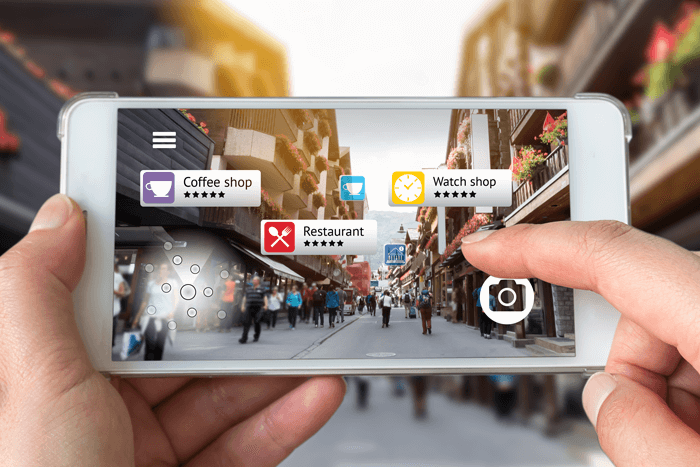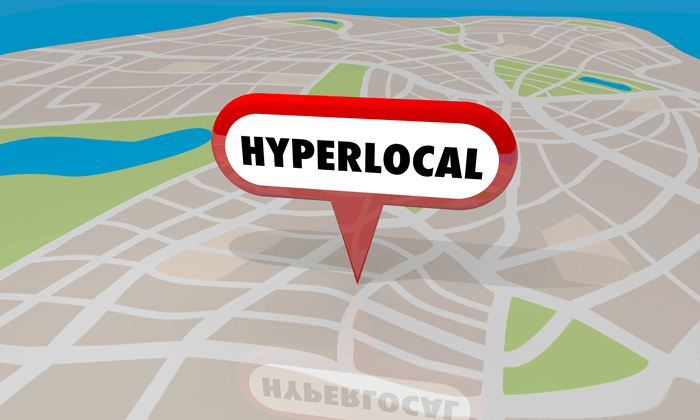Before websites and social media, TV and radio, billboards and the Pony Express – there was word of mouth. Before mass media allowed businesses to advertise broadly, all sales were local, and the only way to get the word out about products and services was to knock on doors or impress your neighbors.
Though technology has given us the chance to reach a much broader audience today, many businesses still desire to target customers at the community, street, and front-door level. It is said everything old is new again, so it’s not surprising that today’s Hyperlocal advertising approach bears a strong resemblance to the days of yore.
Customizing messages in a Hyperlocal manner is not just a philosophy at Zimmerman – it’s in the agency’s DNA. This strategic approach used for all agency clients focuses on a simple value proposition: How do we pinpoint advertising dollars, most efficiently, and target them directly in specific areas (geographically and psychographically) to generate the most revenue and business?
To get to the heart of Hyperlocal, we sat down with Zimmerman’s in-house expert, Adam Herman, EVP, Chief Media Officer to discuss this hot topic.
Q: Can you tell us what Hyperlocal is? And, how Hyperlocal has become the essence of Zimmerman’s advertising retail-focused approach?
A: Hyperlocal is both an agency philosophy and a technology that we use for our clients. So philosophically, it’s our strategic approach. It answers the question, “How can we concentrate the most amount of dollars around the areas that will generate the most amount of business?”
Through research and experience, we know that the majority of retail sales or traffic come from a concentrated area around a brick and mortar location – three to five miles or within a 15-minute drive time. As a result, if we can put more effort around those areas, we reduce waste and increase effectiveness. Then, through technology, we place the right message in front of the right person, in the right place, at the right time, and at the right price.
There wasn’t really a system that existed to do this – so we built it ourselves over the course of eight years. And that became the proprietary Zimmerman data visualization mapping tool that often gets referred to as “Hyperlocal.” The tool uses inputs such as location, demographics around that location, competitors around that location, people who fit the profile of those we want to meet, as well as weather triggers such as temperature change and rain.
And then using other buying tools, like our programmatic buying platform, we’re able to target them in real time. So the way programmatic works, it’s a computerized system that looks at people online, quickly understands who they are based on the profiles we set, and serves them an ad on their connected television, mobile device, desktop, laptop, and so forth. So it’s a delivery system — it identifies the right person; and of course, it’s a measurement tool that feeds our customized real-time dashboards.

How does Zimmerman source the millions of data sets needed to fuel the Hyperlocal system?
We built a proprietary system around a mapping tool, ArcGIS Online, to layer on the data. These data come from Omni, Omnicom Group’s proprietary database, which contains data on 250 million adults, 125 million households, and 50 billion attributes about every U.S. consumer.
So, for example, if we find an area that is younger, another area that’s older, the younger area gets more Snapchat mobile ads, because younger people tend to be more mobile and rely heavily on social media. Conversely, an older area receives more connected TV.
Combined with client data like loyalty information and sales information, we are able to add in the human element into our Hyperlocal process, which results in more informed decision making, and more targeted media plans.

Talk about the creative aspects of bringing a Hyperlocal plan to life?
Creative is an essential component: We can have the most perfect media plan, but if we send the same message out to every single person, we lose some relevance. Dynamic creative allows us to build a creative ad in real time that’s for the type of person we’re targeting. We can change the image, headline, offer, voiceover, the ad, background, call to action, chance to subscribe, and more. Whatever the call to action is, we can make 10 or more different variations of any one of those things and customize it in a blink of an eye.

What is a great example of how Hyperlocal was the difference-maker for one of Zimmerman’s clients?
Planet Fitness – for whom we handle co-op advertising – has been a huge beneficiary of Hyperlocal. It allows us to approach every club differently in terms of media delivery, messaging, and cadence. For each club location, we create localized plans with two budgets – co-op and Hyperlocal. Both are designed to achieve parallel objectives – to get new members to join, of course, but to achieve it at the most efficient cost-per-join for the client.
Through January of 2023, Planet Fitness is killing it – achieving excellent acquisition efficiency and joins that are at a three-year high. That means where the media is working, we’re putting the right message at the right price, and bringing in the people our client wants.

How do you expect Hyperlocal to evolve in 2023 and beyond?
It all starts with the data. As we get more localized and targeted data and tie it into our systems, we get “smarter.” Our machine learning algorithms can make better, faster, and more optimized decisions about where to place ads. And with new technology like ChatGPT becoming available all the time, we are really excited about what the future will hold for Zimmerman and our clients.

